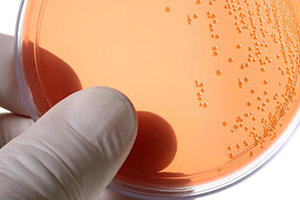INFECTIONS AND OTHER PATHOLOGIES IN PREPUBERTY (Part One)
Overview

Infections in prepuberty are not rare, therefore doctors who deal with the examination of children should be familiar with these clinical conditions. Doctors need to have the proper information regarding the wide range of variation in the appearance of the genital tissues.
Physiological changes occur from maternal estrogens that lead to thickening of the vaginal mucosa and physiological leukorrhea. These changes occur within the first 6 weeks of life. As a consequence of the decrease in estrogens, the vaginal PH is 6.5-7.5, the epithelium becomes thinner, smoother, and atrophic and more sensitive to inflammation.
Vulvitis, vaginitis, and vulvovaginitis are inflammatory conditions of the lower genital tract (vulva,vagina). They are caused as a result of the disruption of the relationship between the normal flora and potentially pathogenic flora. Factors that favor inflammation are:
- hypoestrogenic condition
- anatomical position, the proximity of the vagina to the rectum
- lack of labial fat and pubic hair
- small labia minora
- poor local hygiene
- spread of microbes from respiratory infections by hand from the child to the genital tract
- use of locally irritating substances
Signs and symptoms of genital infections
1 - Erythema
Erythema is one of the most common signs of vaginal inflammations. It is encountered both in pathologies localized in the genital tract and in other cutaneous pathologies. Labia majora and minora are more affected. In the most common cutaneous pathologies are eczema, seborrheic eczema, psoriasis. It is also encountered when using locally irritating substances such as: bubble baths, soap, shampoo, detergents for underwear, tight clothing.
These are avoided by:
- taking baths only with plenty of warm water for 20 minutes only once a day
- using cotton underwear and not synthetic
- using hypoallergenic detergent for underwear
- teaching the child about regular vaginal and perineal hygiene
In infants with recurrent episodes of vulvitis, labial adhesion should be ruled out. It results from the lack of estrogen action at this level. When it is wide it also causes urinary retention. Treatment is performed by using local estrogen. The cream is applied directly to the adhesion several times a day for 3-4 weeks. When the adhesion is resolved, a lubricant such as petroleum jelly is continued to be used to prevent recurrence. Local treatment with betamethasone can also be used, which gives the same result as the estrogen cream. In forms that do not respond to the above treatment, which have thick and wide adhesion, surgical treatment is performed.
2 - Pruritus
Pruritus is one of the symptoms of vaginal inflammations and skin conditions such as: lichen sclerosus and atrophic. Pruritus is also encountered in various parasitic infections, therefore a stool inspection, coproculture is performed and the corresponding antiparasitic medication is given.
3 - Vaginal secretions
Vaginal secretions are encountered in vulvovaginitis (85%), in sexual abuse (5%), foreign bodies (3%), labial adhesion (3%), and in other causes (2%). These secretions vary in color, consistency, and smell depending on the type of infection.
4 - Bleeding
Bleeding accompanies various conditions such as: foreign bodies, bacterial vaginitis, lichen sclerosis, condyloma acuminata, genital ulcers, urethral prolapse, sexual abuse, accidental traumas.
5 - Vaginal pain
Vaginal pain is encountered in: urinary infections, vaginal infections, vaginal irritations, vulvar cutaneous conditions....
History
- Information is taken whether the child is self-sufficient for personal needs or not
- If not, the type and how often the diaper is changed is determined
- If they wash themselves, the method with a bathtub, soap, shampoo... is determined
- It is determined whether they use cotton or synthetic underwear
- The method of cleaning after defecation is determined
- Vaginal secretions are also examined and evaluated, the nature, consistency, color, smell
- It is determined whether there is itching in the genital and anal region
- It is determined whether there are eczemas, diarrhea, allergic rhinitis, upper respiratory infections
- If there is a risk for foreign bodies in the vagina
- The risk for sexual abuse is determined based on the child's behavior
I would like to know how to cure genital warts?
Sent by klaudia, më 18 March 2017 në 11:19
Hello Klaudia! The treatment of genital warts or condylomas is done by a gynecologist. The choice of treatment method depends on their form, size, number, and location. If they do not cause concerns, they are not treated. If they cause concerns such as burning, pain, itching... their treatment is undertaken. The treatment is done with medications or surgery. The treatment with medications is done with creams or gels that are applied directly to the lesion and cause their chemical burning, for example with podophyllin, while surgical treatment is usually reserved for large warts, in forms resistant to medication treatment, or during pregnancy. The treatment is also carried out on the partner when genital warts are present
Replay from Dr. Ilda Ndreko, më 19 March 2017 në 05:31
Hello, I wanted to share with you that I often have pain at the bottom of my stomach near the ovaries. What could it be? Thank you
Sent by chendresa Ramadani , më 23 December 2022 në 19:22
Hello Chendresa! First of all, an ultrasound should be done to check the uterus and ovaries
Replay from Dr. Ilda Ndreko, më 24 December 2022 në 02:37